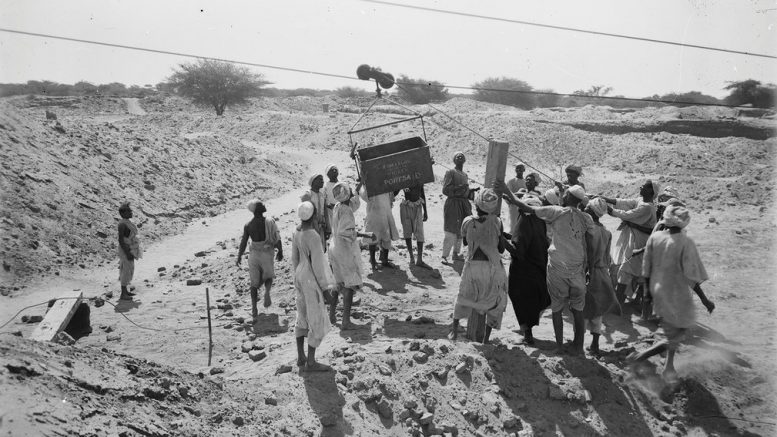The city of Meroë lay undiscovered for two millennia before British archaeologist John Garstang excavated it in the early 20th century – and created some of the first ever photographs of ancient Egypt’s treasures
A shelter built to protect sculptures at the royal baths. John Garstang can be seen standing on a ladder at the entrance with a workman, 1912
At the dawn of the 20th century, British archeologist John Garstang took the radical decision to document his discoveries with photography – and immortalised an ancient world. • Meroë: Africa’s Forgotten Empire is being shown until 14 September at Garstang Museum of Archaeology, Liverpool • All photographs: Garstang Museum of Archaeology

High altar with relief featuring Hapi the Nile god, found in the central sanctuary of the Temple of Amun, 1912
Garstang was born in Blackburn in 1876, and got a scholarship to study maths at Oxford University. During holidays he indulged a newfound interest in archaeology, excavating Roman sites in Britain

Three of Garstang’s Sudanese excavators, 1910
Following later excavations in Egyptian sites like Reqaqnah, Beit Khallaf and Abydos, Garstang came to Meroë, an ancient city on the banks of the Nile situated in what is now Sudan

Decorated column capital, found at the Amun temple, 1910
Meroë had lain undisturbed for 2,000 years before Garstang began his excavations

Female statue discovered in the palace, after restoration. A local workman holds a backcloth, 1912
Committees of wealthy individuals would fund the excavations, in exchange for being able to keep objects found by Garstang and his team

A group visiting the excavations at Meroë, including (from left) Midwinter Bey, director of Sudan Railways; Lord Kitchener; General Sir Francis Reginald Wingate, Sirdar of the Egyptian Army; Professor Archibald Sayce; John Garstang; and Lady Catherine Wingate, 1911
Remarkable discoveries were made, like the decapitated head of a bronze statue of Roman emperor Augustus, sacked from a raid on Roman garrisons further north in Egypt

Traditional east African Tukul house, near the site of Meroë, 1910
The head was buried underneath a doorway to a building thought to be a victory monument or temple – in walking over the head, Meroites would effectively reiterate their victory. The piece is now owned by the British Museum

A steam train passing Garstang’s camp at Meroë, visible in the background, 1911
Garstang also discovered brightly coloured frescoes, though these were destroyed a few years later after the building he stored them in was damaged in a storm

Sudanese traditional dress, 1910
Garstang’s photography also documented the contemporary world, like this Sudanese clothing

Upper fragment of a stele (inscribed stone) in Meroitic script, found at the lion temple, 1910
Lion imagery was prevalent, including in a temple adorned with the lion headed god Apedemak

Garstang and his wife Marie examining statue fragments in the tank at the ‘Royal Baths’, 1913
The Garstang Museum in Liverpool has recently 3D-printed copies of various artefacts found at Meroë

Aerial railway in use at the site. Widnes and Port Said can be seen written on the box
Following his Egyptian work, Garstang went on to make major excavations in Israel, heading Jerusalem’s British School of Archaeology, and Turkey, the latter completed after the second world war halted his progress. He then founded the British Institute of Archeology in Ankara

Source: theguardian.com



Be the first to comment at "Sanda of time, 1910: Difficult living conditions in ancient Egypt – In photos"